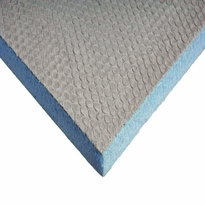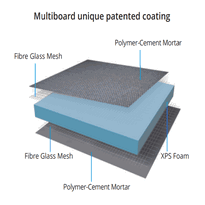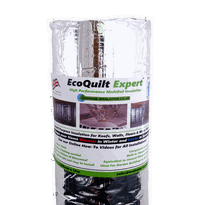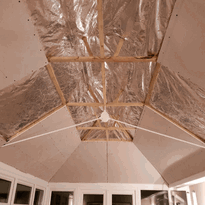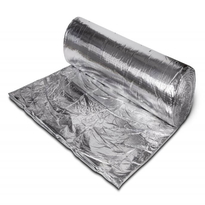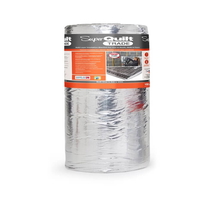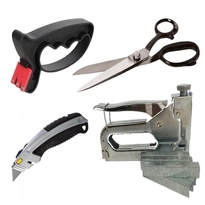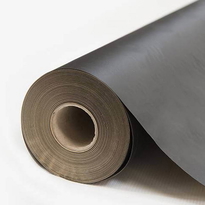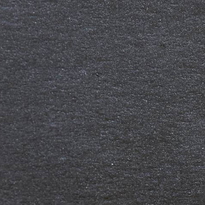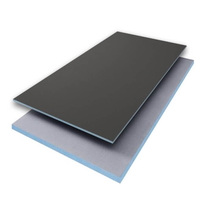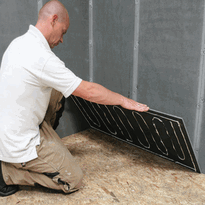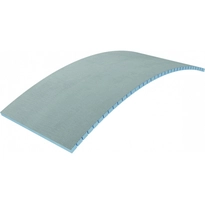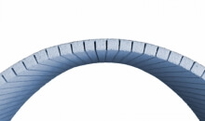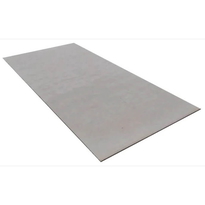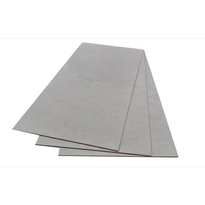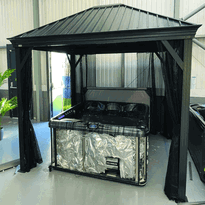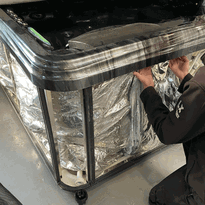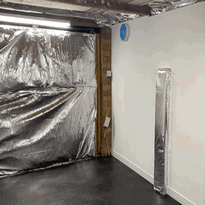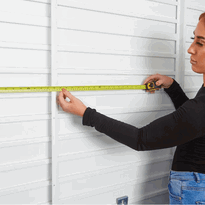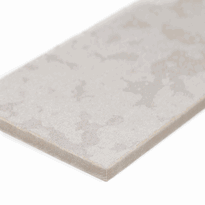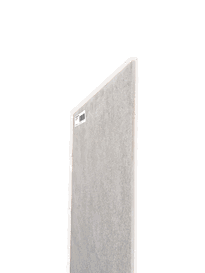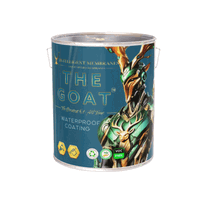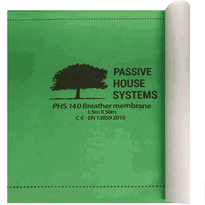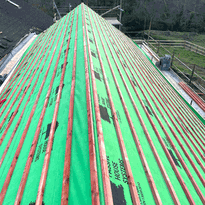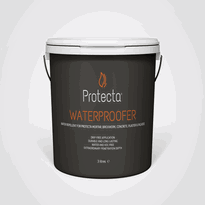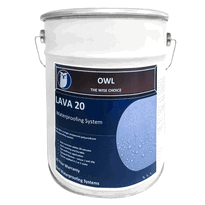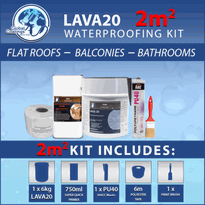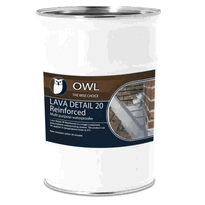Waterproof Insulation for Roof
Waterproof insulation for roofs comprises materials such as Polyiso, XPS, and EPS foam boards, all designed to resist water while enhancing energy efficiency. Spray foam insulation is particularly favoured for its ability to create seamless, airtight barriers that conform to irregular surfaces and effectively prevent leaks.
Utilising cover boards and mineral wool further enhances the durability of the roofing system, offering protection to the insulation from potential damage and contributing to fire resistance.
Incorporating reflective barriers alongside traditional insulation methods can significantly reduce heat transfer and minimise moisture accumulation.
Ongoing research and development continue to unveil more effective techniques to ensure a waterproof and long-lasting roof system, catering to the specific needs of buildings throughout the UK.
Types of Waterproof Insulation Materials for Roofs
Waterproof insulation materials are vital for safeguarding roofs against water damage while promoting energy efficiency. They play a crucial role in preventing water intrusion, which can lead to leaks, mould, and structural deterioration, all while enhancing thermal performance.
Rigid foam board insulation is a preferred option, with common types including Polyiso, XPS, and EPS. Polyiso boasts the highest thermal resistance and often comes with a foil facing that serves as a radiant barrier, although it tends to be pricier. XPS is known for its excellent moisture resistance and robust compressive strength, making it suitable for commercial roofing applications. EPS, on the other hand, is lightweight and easy to manipulate but offers less resistance to moisture. Rigid foam boards are widely used in various roofing systems because of their durability and effectiveness at moisture resistance.
Proper installation of these materials is essential to prevent water absorption. In addition to rigid foam boards, there are other choices available, such as fibreglass batt, mineral wool, cover boards, and loose-fill insulation. Each of these materials possesses distinct properties that cater to varying roofing requirements.
When selecting the appropriate insulation, it's important to consider factors such as moisture resistance, thermal efficiency, and ease of installation to ensure long-lasting performance and protection for your roof.
Benefits of Spray Foam Insulation in Waterproofing
Spray foam insulation provides numerous advantages for waterproofing roofs, making it a highly effective option for safeguarding against water damage. It creates a seamless, monolithic barrier that eliminates gaps, seams, or joints, significantly reducing the likelihood of leaks. The insulation easily adapts to irregular roof surfaces, filling cracks and levelling depressions to prevent water pooling. Spray foam’s elasticity allows it to expand and contract with temperature changes, further enhancing its waterproof capabilities as it maintains its integrity over time. Additionally, the foam forms an airtight, waterproof seal on the roof surface, effectively blocking water infiltration and minimising the risk of moisture-related issues. It also self-flashes around roof penetrations such as vents and pipes, enhancing the overall waterproof integrity of the roofing system. Furthermore, its durability allows it to withstand harsh weather conditions, including hail, snow, rain, and wind. With proper maintenance, spray foam insulation can last for decades, providing a reliable and long-lasting solution that adds value and peace of mind to any roofing system. These characteristics make spray foam insulation a sound choice for those seeking robust waterproofing solutions.
Rigid Foam Board Options for Waterproofing Performance
Rigid foam boards are popular choices for enhancing roof waterproofing performance due to their durability and ability to provide consistent thermal protection. Polyisocyanurate (Polyiso) offers the highest thermal resistance per inch, making it ideal for energy efficiency. Extruded polystyrene (XPS) delivers reliable thermal values and strong moisture resistance, which is suitable for challenging roof conditions. Expanded polystyrene (EPS) is a more economical option but has lower thermal resistance and is more vapour permeable, potentially impacting long-term performance. Proper installation techniques, such as overlapping seams and layering, help to optimise insulation and reduce thermal bridging. Closed-cell foams like Polyiso and XPS resist water penetration, providing an effective barrier against damage. Waterproofing performance is further enhanced when foam boards are combined with moisture-resistant facers, which help to prevent water infiltration and prolong the lifespan of the roof. These foam boards, particularly when combined with moisture-resistant facers, significantly enhance waterproofing and contribute to a long-lasting, durable roofing system.
The Role of Cover Boards in Enhancing Roof Durability
Cover boards play an essential role in safeguarding roof insulation from mechanical damage caused by foot traffic, tools, and environmental factors such as hail. They also provide protection against fire and severe weather conditions, enhancing both safety and longevity of the structure. Different types of cover boards are available, each offering specific benefits for various roofing needs. By acting as a robust barrier, cover boards significantly enhance the overall durability and resilience of the roofing system. The implementation of these boards not only helps maintain the integrity of the insulation but also contributes to improved energy efficiency. This is particularly vital in the UK, where unpredictable weather patterns can place considerable strain on roofing systems. Additionally, cover boards can help prevent moisture infiltration, which can lead to structural issues over time. Their use is increasingly recognised as a best practice in the construction and maintenance of roofs, ensuring that buildings remain secure and functional for years to come.
Mechanical Damage Resistance
When it comes to safeguarding roof insulation from physical damage, the utilisation of robust cover boards is essential. These boards serve as a formidable layer, protecting insulation from impacts such as foot traffic, dropped tools, hail, and airborne debris. They help prevent compression and dents in the insulation, which could lead to water accumulation and damage to the membrane, ultimately resulting in leaks. Provides a sturdy substrate for roofing systems Cover boards also distribute weight evenly across the roof surface, thereby reducing the risk of localised damage and enhancing the roof's longevity. They provide a defence against hail strikes by deflecting impacts and resist damage from wind-borne debris as well as environmental stresses. Moreover, their inherent strength diminishes the need for maintenance, contributing to the overall durability of roofs.
Fire and Weather Protection
Fire and weather conditions present considerable challenges to the durability of roofing systems, making effective protection essential for long-lasting roofs. Cover boards are crucial in providing this protection. Gypsum-based cover boards contain a significant amount of crystallised water, which vaporises during fire, serving as a natural fire suppressant. They also create a barrier that diminishes the risk of insulation ignition from both interior and exterior fires. Gypsum's fire-resistant properties make it especially effective in fire protection. When installed under or above insulation, cover boards assist in preventing the spread of fire from within the building to the roof and vice versa from external sources. The fiberglass mat facers on gypsum boards maintain their strength during fires, enhancing fire resistance.
Moreover, cover boards improve weather durability by resisting hail, wind, and moisture, thereby extending the lifespan of the roof and reducing the need for repairs. Their role in safeguarding roofs against severe weather conditions is invaluable, ensuring that buildings remain protected regardless of the elements.
Incorporating Mineral Wool for Fire-Resistant Waterproofing
Mineral wool is an invaluable component in waterproof roofing systems due to its fire-resistant characteristics.
It's capable of withstanding elevated temperatures and effectively slowing the spread of fire, thereby enhancing overall safety. Furthermore, mineral wool's moisture-resistant qualities help to prevent water damage, mould, and decay, significantly prolonging the lifespan of the roof. Made from natural or synthetic minerals enhances its durability and performance in harsh conditions. By incorporating mineral wool, not only do you gain a robust fire barrier, but you also ensure that your roofing system remains intact and functional in the face of adverse weather conditions.
This dual benefit makes mineral wool an essential choice for those seeking to maximise the durability and safety of their roofing solutions.
Choosing this material reflects a commitment to quality and safety, ensuring that your property is well-protected against both fire hazards and moisture-related issues.
Fire Safety Benefits
Mineral wool insulation is inherently non-combustible and can endure extreme temperatures, making it an excellent choice for fire safety in roof waterproofing applications.
Its impressive melting point significantly reduces the risk of ignition and hinders the spread of flames, thereby safeguarding both the structure and its occupants.
When utilised as fire barriers, mineral wool enhances evacuation times and mitigates fire growth. Properly installed, it serves as an effective passive fire-stopping element, minimising gaps and bolstering fire containment.
Furthermore, mineral wool doesn't release smoke or toxic fumes during a fire, consequently improving safety for everyone inside the building.
The durability of mineral wool ensures that its fire resistance remains reliable over many years. Its stability under high heat conditions This longevity, coupled with quick installation and its versatile forms, positions mineral wool as a vital component for creating safer and more resilient roofing systems in the UK.
Moisture Resistance Factors
Waterproofing roofs involves more than merely sealing surfaces; it also necessitates the use of insulation materials that resist moisture damage.
Mineral wool naturally repels water, preventing moisture from accumulating within the insulation layer. Its open fibre structure doesn't trap water, which diminishes the risks of mould, mildew, and rot that can compromise roofing components and impact indoor air quality. Higher density also contributes to its superior water resistance compared to other insulation types. This moisture resistance enhances the durability and lifespan of the roofing system, leading to reduced maintenance and replacement costs.
Furthermore, mineral wool’s water-resistant properties help maintain thermal performance, as wet insulation typically loses its ability to insulate effectively.
By minimising water intrusion, mineral wool contributes to a healthier building environment and protects structural elements.
Its moisture resistance makes it a dependable choice for robust, energy-efficient roofing insulation.
Using Reflective and Radiant Barriers to Improve Waterproofing Effectiveness
Using reflective and radiant barriers can indirectly enhance the waterproofing effectiveness of a roof by reducing the amount of heat that penetrates the attic space. These barriers are capable of reflecting a significant percentage of radiant heat transfer, which lowers attic temperatures and diminishes thermal stress on roofing materials. For maximum efficiency, proper installation is essential, with an air gap facing upwards. While these barriers don't serve as direct water barriers, they support waterproofing efforts by minimising moisture accumulation that can result from excessive heat. To ensure ongoing effectiveness, routine maintenance, such as cleaning dust from reflective surfaces, is crucial. When used in conjunction with traditional waterproof membranes, reflective and radiant barriers contribute to a more robust thermal envelope, thereby prolonging the lifespan of the roof and mitigating moisture-related issues. Radiant barriers significantly decrease thermal radiation and reduce heat transfer. Key benefits include: - Reducing heat buildup, which decreases the risk of moisture - Enhancing overall energy efficiency - Protecting roofing materials from thermal stress - Emphasising the necessity of proper installation for optimal performance - Highlighting the importance of regular maintenance to preserve reflectivity
Conclusion
Choosing the right waterproof insulation for roofs is essential and should be tailored to the specific requirements and conditions of the structure. Materials such as spray foam, rigid foam boards, and mineral wool provide effective waterproofing along with added benefits like fire resistance and durability.
Incorporating cover boards and reflective barriers can further enhance performance, safeguarding the roof against water intrusion and environmental degradation. Careful selection and professional installation of these materials are vital to ensure a long-lasting, water-resistant roof that retains its integrity over time.
When considering insulation options, it's important to think about factors like thermal performance, moisture control, and compatibility with existing roofing systems. This thoughtful approach will help in achieving optimal results and extending the lifespan of the roof.
